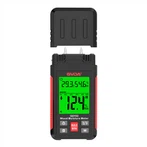Precautions for installation of toxic and harmful gas detectors
The toxic gas alarm is composed of a detector and an alarm control host, widely used in the petrochemical industry where toxic gases exist, such as petroleum, gas, chemical, and oil depots. It is used to detect leaks in indoor and outdoor hazardous areas and is an important instrument to ensure production and personal safety. When there is toxic gas in the tested site, the detector converts the gas signal into a voltage signal or a current signal and transmits it to the alarm instrument. The instrument displays the percentage concentration value of the lower explosive limit of the toxic gas. When the concentration of toxic gases exceeds the alarm setting value, an audible and visual alarm signal prompts, and the duty personnel take * * measures in a timely manner to avoid combustion and explosion accidents.
1. Precautions during application
Once the fixed installation of the toxic gas alarm is in place, its position is not easily changed. The following points should be considered when applying it specifically.
(1) Identify the potential leakage points of the device to be monitored, analyze their leakage pressure, direction, and other factors, and draw a distribution map of probe positions. According to the severity of the leakage, it is divided into three levels: I, II, and III.
(2) Determine the direction of toxic gas leakage when a large amount of leakage occurs based on specific factors such as airflow direction and wind direction in the location.
(3) According to the density of leaking gas (greater than or less than air), combined with the air flow trend, the three-dimensional flow Run chart of leakage is synthesized, and the initial point setting scheme is made at the downstream of the flow.
(4) Study whether the leakage state of the leakage point is micro leakage or jet like. If it is a slight leak, the location of the point should be closer to the leak point. If it is a jet leakage, it should be slightly away from the leakage point. Based on these conditions, a final site setting plan has been formulated. In this way, the quantity and variety to be purchased can be estimated.
(5) For places with significant toxic gas leaks, a detection point should be set up every 10-20m apart according to relevant regulations. For small and discontinuous pump rooms that are not on duty, attention should be paid to the possibility of toxic gas leakage. Generally, a detector should be installed at the lower air outlet.
(6) For places with hydrogen leakage, the detector should be installed on the plane above the leakage point.
(7) For media with a gas density greater than air, the detector should be installed on a plane below the leakage point, and attention should be paid to the characteristics of the surrounding environment. For places prone to the accumulation of toxic gases, special attention should be paid to the setting of monitoring points.
(8) For open toxic gas diffusion and escape environments, if there is a lack of good ventilation conditions, it is easy to make the toxic gas content in the air of a certain location close to or reach the lower explosive limit concentration. These are monitoring points that cannot be ignored. According to the analysis of on-site accidents, more than half of them were caused by incorrect installation and calibration. Therefore, it is necessary to introduce the precautions for correct installation and calibration to reduce malfunctions.
2. Precautions for the installation of toxic gas alarms
(1) The alarm probe is mainly a detection element that contacts the combustion gas sensor. It consists of a spherical platinum wire coil wrapped with aluminum oxide and Adhesive. Its outer surface is covered with platinum, palladium and other rare metals. Therefore, be careful during installation to avoid damaging the probe.
(2) The installation height of the alarm should generally be between 160-170cm to facilitate daily maintenance by maintenance personnel.
(3) The alarm is a measuring instrument with sound and light display functions, and should be installed in a place where workers can easily see and hear it, in order to eliminate hidden dangers in a timely manner.
(4) There should be no strong electromagnetic fields (such as high-power motors and transformers) around the alarm that may affect the operation of the instrument.
(5) The installation position of indoor probes should also vary depending on the density of the measured gas. When the measured gas density is less than the Density of air, the probe shall be installed 30cm away from the roof in a downward direction; On the contrary, the probe should be installed 30cm above the ground in an upward direction.






